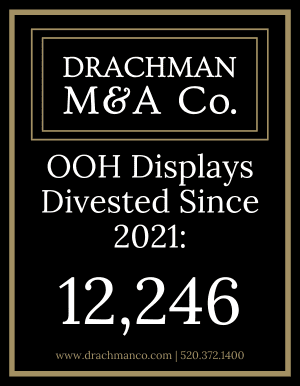 By Kerry Yoakum, VP of Government Affairs, OAAA.
By Kerry Yoakum, VP of Government Affairs, OAAA.
Billboard Insider recently published support for standardization for the sake of advancing digital billboards. Here’s a link to OAAA’s webpage on billboard standards which is available to the public.
Aspect ratios
The first guideline you will find is a document which provides digital-format aspect ratios, an important measure for standardizing digital screen content.
Aspect ratio describes the dimensions of a digital screen — regardless of size of the screen —- by comparing the width to the height and expressing it in ratio form (width:height). Therefore, two digital screens of differing size but with the same aspect ratio will accommodate the same content because the screens share the same proportions.
The aspect ratio for a digital bulletin is 7:2 and is configured to match the dimensions of a standard legacy bulletin. The common aspect ratio for OOH screens used in airports, subways, and malls is 16:9.
Lighting
OAAA developed industry digital lighting guidelines, which are explained on our “standards” webpage.
A growing number of state and local governments are adopting the industry’s lighting standard, to adjust the brightness of digital billboard lighting to surrounding light conditions (0.3 foot candles over ambient light conditions).
This industry standard comes from recommendations developed by Dr. Ian Lewin, former president of the Illuminating Engineering Society of North America (IESNA). Resources contained on this page help explain how to measure digital billboard light (with or without the media company’s participation).
Security
OAAA guidelines provide practical, easy-to-implement, and inexpensive steps for digital billboard security and to reduce the odds of hacking.
Security is important, as more digital billboards are deployed because:
- Incidents of hacking, while rare, can be embarrassing, time-consuming, and distracting
- Security is a common topic of discussion in the permitting process
API specifications
OAAA worked with manufacturers and billboard operators to develop an API (Application Programming Interface) that can be used to develop a monitoring dashboard. A dashboard provides access to the current health of the display. Users can see the OAAA defined data points in an easy-to-read visual format no matter who manufactured the digital units.
Key points of data for operators include:
- Display Brightness Output
(Based on light sensor reading and when commands are sent to hardware) - Current Ambient Light Sensor Reading(Value the photocell is interpreting)
- Ambient Light Sensor Active (Is the photocell operative)
- Visual Operating Percentage (Calculated value of the display operative area with no faults)
- Content Input Status (Does the display detect the input content)
- Requires Service (Does the display determine that service is needed)
[wpforms id=”9787″]
Paid Advertisement


















Digital Billboard Aspect Ratio: 14×48 208×752 that looks more like 3.6 to 1 or 3.4 to 1. I have never seen it stated as 7:2, but that would be 3.5:1… So good with that, the other sizes: 10×30 and 10×36 are common too: 3:1 and 3.6:1 we see some 2:1 too.
Nice to see standards!